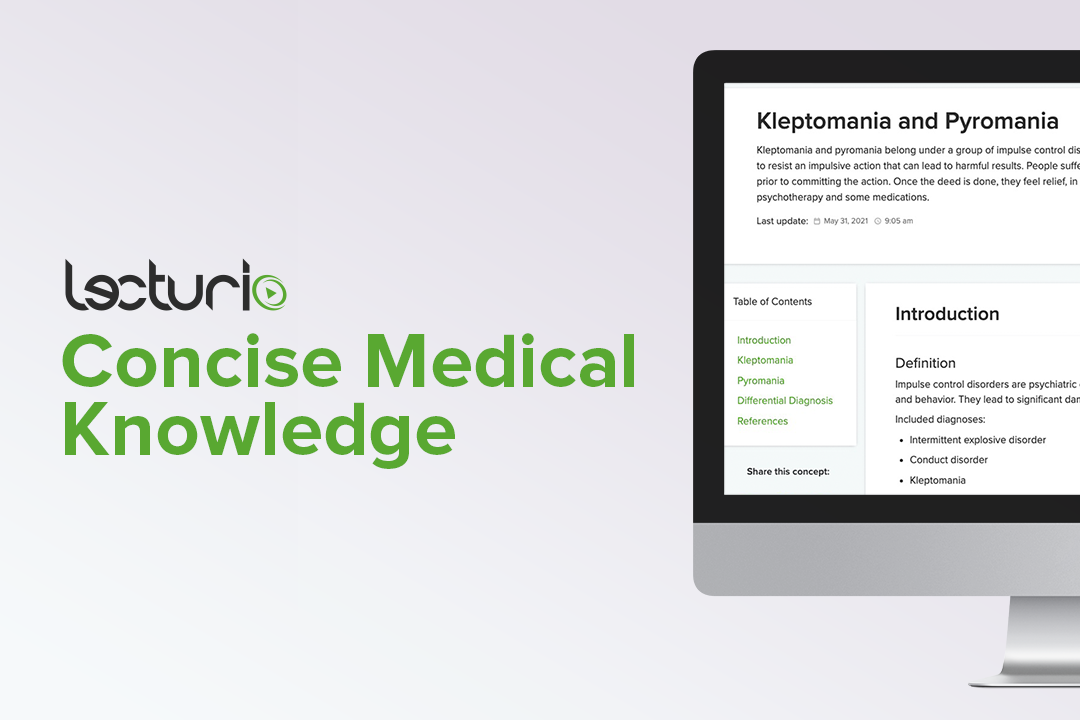Playlist
Show Playlist
Hide Playlist
Kleptomania
-
Slides ImpulseKleptomania.pdf
-
Download Lecture Overview
00:01 Kleptomania is another one of the impulse control disorders. 00:05 It's more common in women than men, occurs in 5% of shoplifters, the symptoms often occur during times of stress, and there's an increased incidence of mood disorders, eating disorders, and also OCD. 00:20 The etiology may involve biological factors and also childhood family dysfunction, and the course of this illness is usually chronic. Let's talk about the diagnosis. 00:33 So diagnostic criterion include failure to resist urges to steal objects that are not needed for personal or monetary reasons. 00:43 There's an increasing sense of tension immediately before the theft, and then there's pleasure, or gratification, or relief right after the theft. The stealing is not committed to express any anger or vengeance and it's also not a response to delusion or hallucination. 01:02 And the stealing is not better explained by conduct disorder, manic episode, or an antisocial personality. Here's a point to remember. A quarter of patients with bulimia nervosa actually have co-morbid kleptomania and it's also important to note that kleptomania is actually different from shoplifting because individuals who shoplift, they're doing it for the monetary gain. Whereas people with kleptomania, are doing it simply for the thrill. In terms of treatment, it's multifold. 01:33 So, you wanna do therapy looking at insight-oriented therapy, behavior therapy, and helping to recondition patients to have healthier behaviors. 01:45 The insight oriented therapy is especially useful for patients who have guilt and depression associated with their impulse control. SSRIs can sometimes be helpful especially when there's co-morbid depression. So tell me what are some SSRIs that can be used to treat kleptomania? Well, fluoxetine, sertraline, and paroxetine are few examples. 02:11 And then naltrexone is another medication that could possibly help in the treatment of this impulse control disorder. But how does a naltrexone work, you might ask? Well, it blocks opioid receptors and thereby reduces pleasure that was once obtained by performing an impulsive act. The same theory works for addictions whether its alcohol or other substances. Naltrexone tends to reduce that pleasure threshold. 02:40 So that's a little bit about kleptomania, another one of the impulse control disorders.
About the Lecture
The lecture Kleptomania by Helen Farrell, MD is from the course Control Disorders.
Included Quiz Questions
Which of the following is a co-morbid disorder of kleptomania?
- Bulimia nervosa
- Generalized anxiety disorder
- Gambling disorder
- Agoraphobia
- Pyromania
Which of the following about kleptomania is TRUE?
- It is more common in women than men.
- It occurs in 50 % of the shoplifters.
- Symptoms often occur after an episode of syncope.
- The illness is usually acute following a traumatic event.
- The patient often has a preexisting seizure disorder.
Which of the following is NOT a treatment option for kleptomania?
- Imipramine
- Aversion conditioning
- Systemic desensitization
- Naltrexone
- Paroxetine
Customer reviews
5,0 of 5 stars
| 5 Stars |
|
5 |
| 4 Stars |
|
0 |
| 3 Stars |
|
0 |
| 2 Stars |
|
0 |
| 1 Star |
|
0 |




